The forex and commodities markets remain dynamic as key economic data and policy expectations drive price action.
EUR/USD holds steady at $1.0382 ahead of the U.S. non-farm payrolls report, while GBP/USD trades around $1.2426, facing pressure from the BoE’s cautious outlook. The Japanese yen strengthened past 152 per dollar with the potential of BOJ rate hikes, with markets eyeing potential wage increases.
Gold surged to record highs near $2,870 per ounce, marking a sixth consecutive weekly gain, supported by central bank purchases and safe-haven demand. Silver remained above $32 per ounce with supply deficits and trade developments between the U.S. and China.
| Time | Cur. | Event | Forecast | Previous |
| 13:30 | USD | Average Hourly Earnings (MoM) (Jan) | 0.3% | 0.3% |
| 13:30 | USD | Nonfarm Payrolls (Jan) | 169K | 256K |
| 13:30 | USD | Unemployment Rate (Jan) | 4.1% | 4.1% |
| 15:00 | USD | Fed Monetary Policy Report |
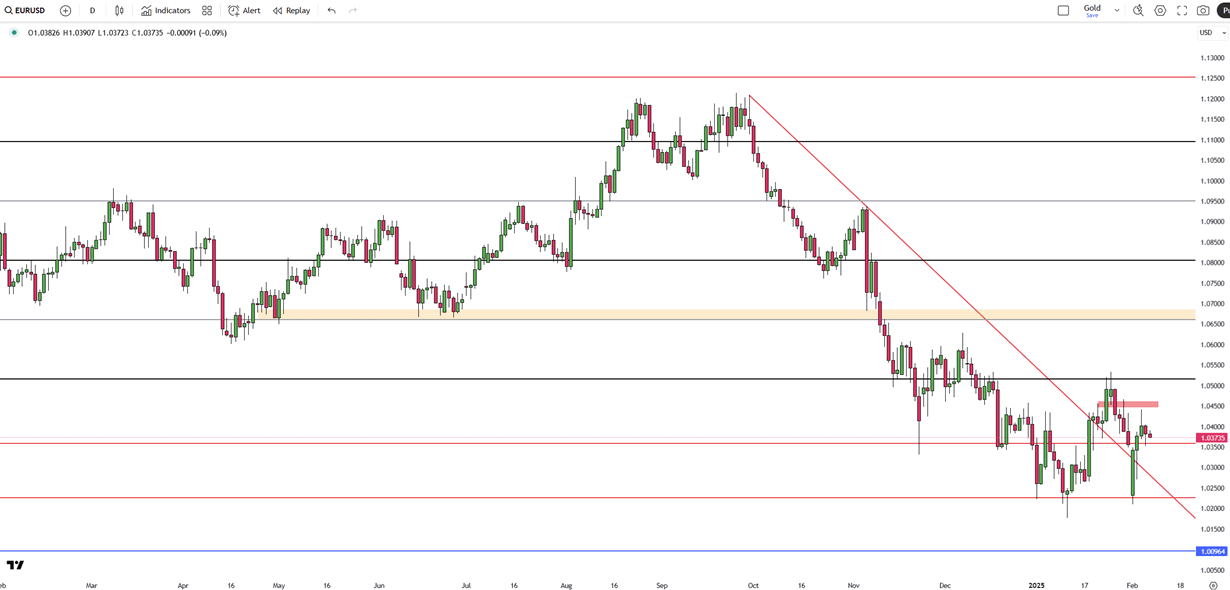
EUR/USD is steady at $1.0382, awaiting the U.S. non-farm payrolls report. Markets expect the U.S. unemployment rate to stay at 4.1% with 170,000 jobs added in January, but population growth revisions could add volatility. The Euro faces pressure as the ECB remains cautious amid inflation and growth concerns. Traders await clearer signals from U.S. data and ECB guidance. A strong U.S. jobs report may push EUR/USD lower, while a weak one could support the Euro.
From a technical perspective, resistance levels are at 1.0400, 1.0460, and 1.0515 if the price breaks higher. On the downside, support is at 1.0350, followed by 1.0220 and 1.0180.
| R1: 1.0400 | S1: 1.0350 |
| R2: 1.0460 | S2: 1.0220 |
| R3: 1.0515 | S3: 1.0180 |
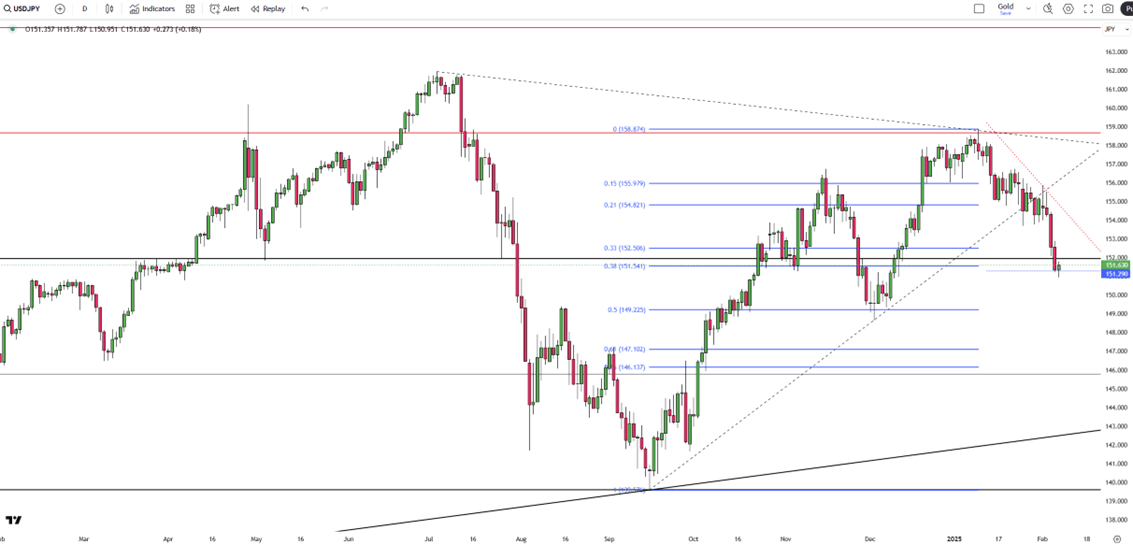
The Japanese yen strengthened past 152 per dollar, its highest in nearly two months, as expectations grow for continued BOJ rate hikes. BOJ board member Naoki Tamura suggested raising the policy rate to at least 1% by fiscal 2025. Household spending rose 2.7%, the first increase in five months, while real wages grew for a second month, supported by higher winter bonuses. Market speculation now focuses on a potential 5% wage increase in Japan's spring negotiations.
The key resistance level is 153.85, with a break above targeting 154.90 and 156.00. On the downside, major support stands at 151.25, followed by 149.20 and 147.10.
| R1: 153.85 | S1: 151.25 |
| R2: 154.90 | S2: 149.20 |
| R3: 156.00 | S3: 147.10 |
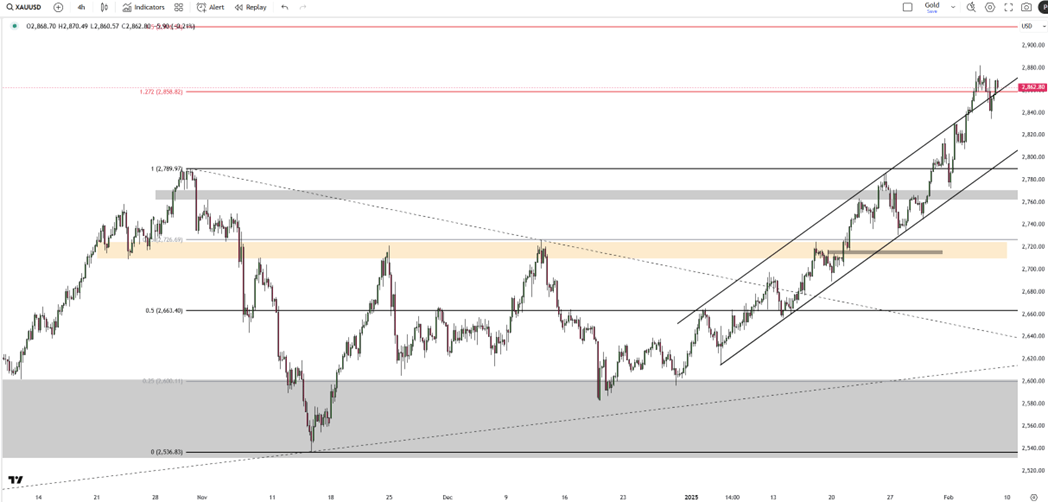
Gold prices surged to nearly $2,870 per ounce, hitting record highs and marking a sixth consecutive weekly gain. The rally is driven by increased central bank purchases and rising demand for safe-haven assets amid global trade tensions and economic uncertainty. President Trump imposed a 10% tariff on all Chinese imports, prompting retaliatory measures from Beijing. Loose monetary policies from major central banks, including rate cuts by the ECB, BoE, and BoC, are supporting gold. Markets are also expecting Fed rate cuts and focusing on the upcoming jobs report.
Technically, the first resistance level is at 2,879, with the next targets at 2,917 and 2,950 if breached. On the downside, initial support is at 2,830, followed by 2,790 and 2,760.
| R1: 2879 | S1: 2830 |
| R2: 2917 | S2: 2790 |
| R3: 2950 | S3: 2760 |
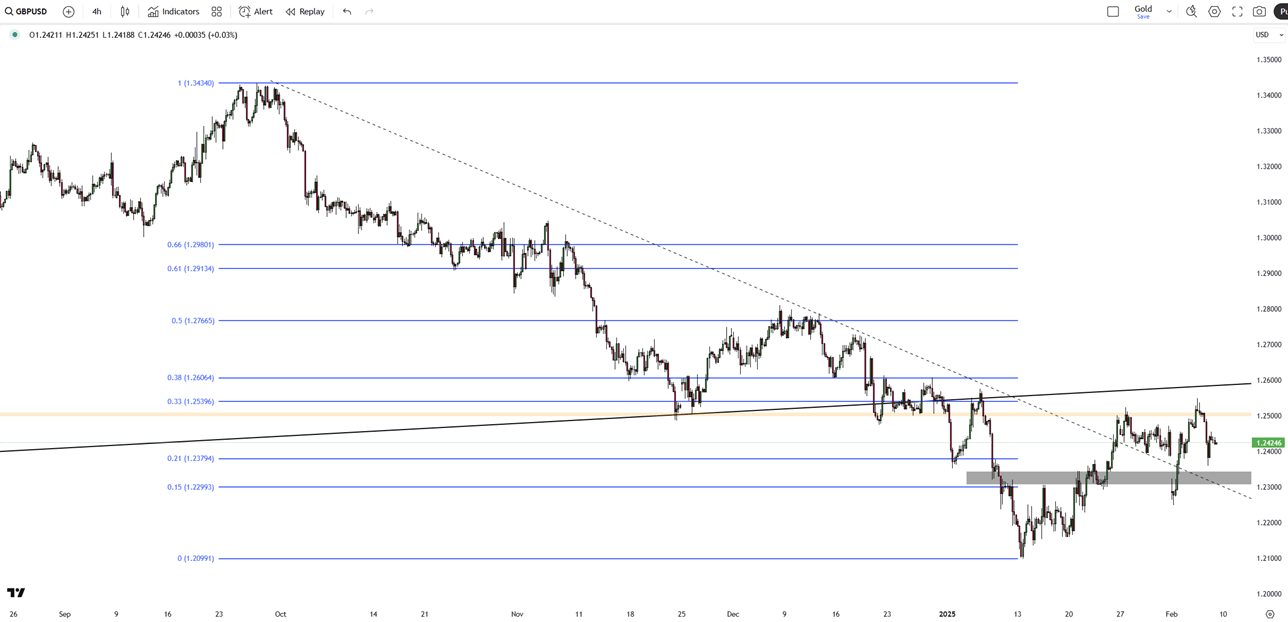
GBP/USD is trading around $1.2426, down 0.1%, as the market focus shifts to the U.S. jobs report. The pound is under pressure due to the BoE’s forecast of higher inflation and weaker growth, with two officials advocating for a larger rate cut. Meanwhile, the U.S. labor market is expected to add 170,000 jobs and maintain a 4.1% unemployment rate. A strong U.S. jobs report could push GBP/USD lower, while weak data may support the pound.
The first resistance level is 1.2500, with the next targets at 1.2600 and 1.2650 if breached. On the downside, initial support is at 1.2340, followed by 1.2265 and 1.2100.
| R1: 1.2500 | S1: 1.2340 |
| R2: 1.2600 | S2: 1.2265 |
| R3: 1.2650 | S3: 1.2100 |
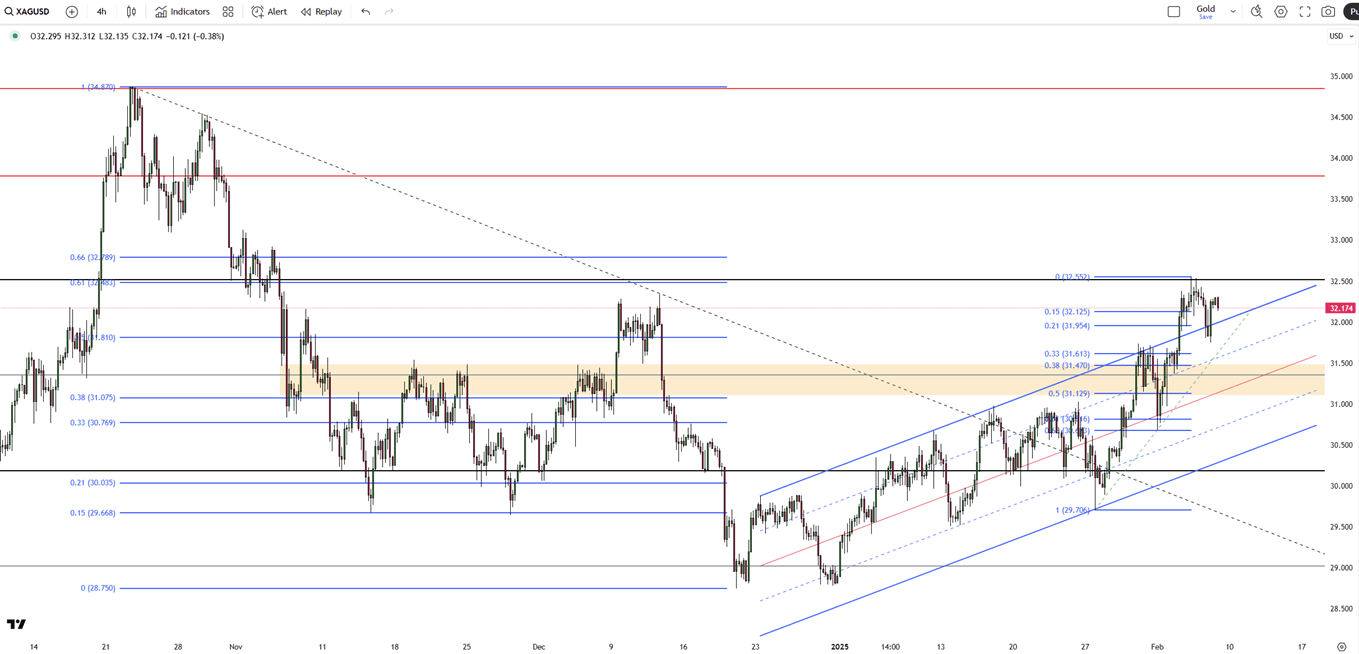
Silver remained above $32 per ounce, holding near a three-month high as the dollar weakened amid easing global trade war concerns. The U.S. and China have adopted a cautious stance on tariffs, with Presidents Trump and Xi Jinping set to discuss trade developments and potentially reverse some tariffs. This reduces inflation risks and keeps expectations intact for two Fed rate cuts this year. On the supply side, the Silver Institute projects a fifth consecutive year of market deficits in 2025, driven by strong industrial demand and solid retail investment, offsetting weaker jewelry and silverware consumption.
The first resistance level is 32.50, with the next targets at 33.00 and 33.50 if breached. On the downside, initial support is at 31.80, followed by 30.90 and 30.20.
| R1: 32.50 | S1: 31.80 |
| R2: 33.00 | S2: 30.90 |
| R3: 33.50 | S3: 30.20 |
Russia-Ukraine peace efforts remain stalled.
Detail Trump Pressures Fed as Dollar Slips After Cut (12.11.2025)The Federal Reserve ended 2025 with a 25-bps cut to 3.50-3.75%, maintaining guidance for one cut in 2026.
Detail Fed Day Takes Shape, Chair Decision Nears (12.10.2025)Income strategies are under pressure as lower yields reduce the appeal of short-term Treasuries, pushing investors toward riskier segments such as high yield, emerging-market debt, private credit, and catastrophe bonds.
DetailThen Join Our Telegram Channel and Subscribe Our Trading Signals Newsletter for Free!
Join Us On Telegram!